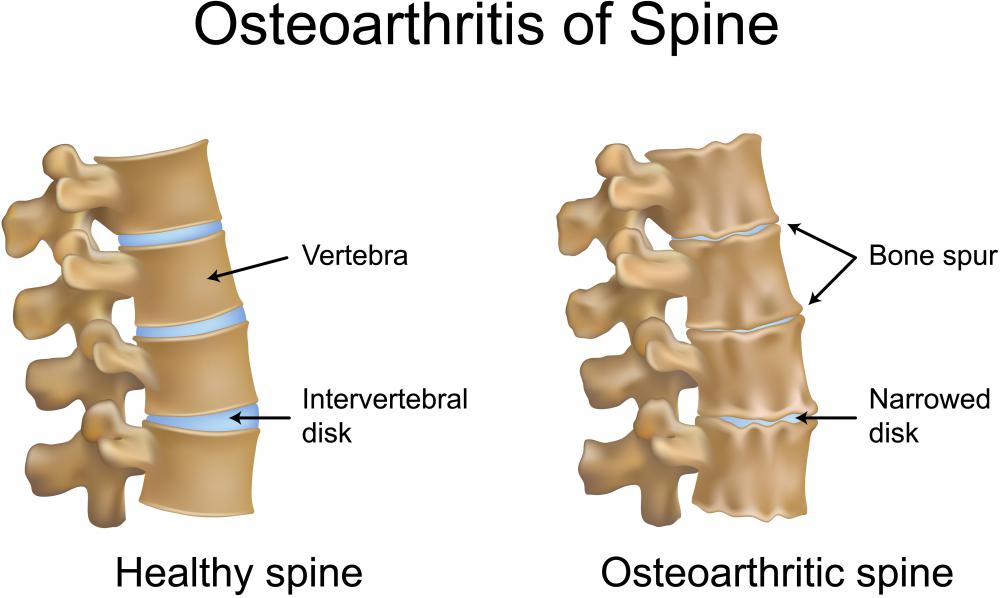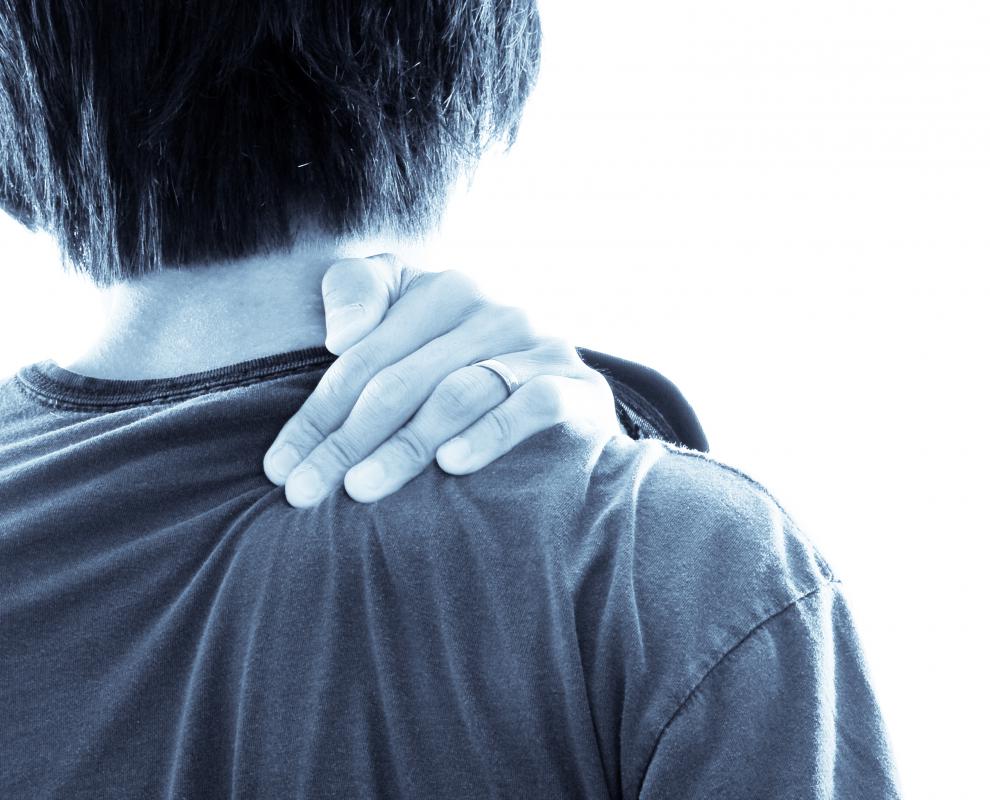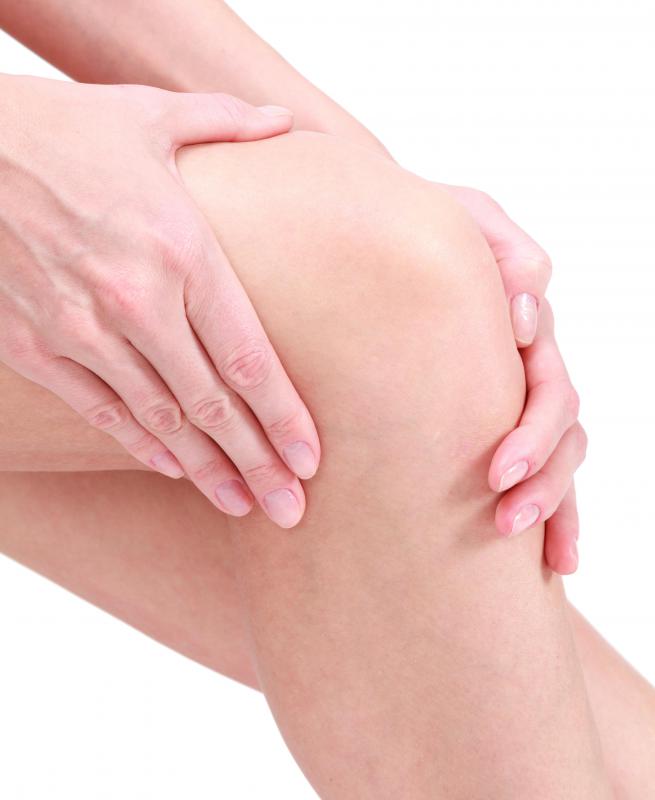At WiseGEEK, we're committed to delivering accurate, trustworthy information. Our expert-authored content is rigorously fact-checked and sourced from credible authorities. Discover how we uphold the highest standards in providing you with reliable knowledge.
What are the Most Common Bone Spur Symptoms?
Known medically as osteophytes, bone spurs are a growth of bone on top of one that already exists. As bone spurs usually occur during the aging process or with repetitive motion, a person may not display any symptoms and be unaware he or she has the condition. In instances when bone spurs become pointy and abrade against bones, ligaments, tendons, or nerves, bone spur symptoms are often characterized by pain or reduced motion in the joints.
Frequent locations for bone spurs include the back, shoulders, hips, knees, and feet. Pain is often limited to the area of the body where the bone spur is located. Bone spur symptoms often include more pronounced pain during activity. The pain will usually subside when the individual stops being active.

A symptom of bone spurs in the shoulder and knee include limited range of motion. In the shoulder, bone spurs may press against a person's rotator cuff, which is responsible for shoulder movement. This restricted movement may lead to tendinitis and tears in the rotator. Bone spurs can affect the tendons around the knee, making it difficult and painful to extend and flex the joint.

Depending on location, bone spur symptoms may vary. In the fingers, symptoms include pain along with hard swelling under the skin. The inflammation causes the fingers to look disfigured. In the neck, bone spurs often project inward. Common symptoms of bone spurs in the neck include occasional trouble swallowing or breathing.
In the spine, common bone spur symptoms include a blunt pain when an individual walks or stands. Bone spurs can protrude against nerves in the spine, a condition called radiculopathy. When this occurs, other parts of the body can be affected; radiculopathy can lead to pain, lack of feeling, or weakness in an individual's limbs. Common symptoms of bone spurs in the back may also include headaches and shoulder pain.
In more severe cases, bone spurs in the spine can affect the spinal cord. When the spinal cord becomes compressed or damaged, it's called myelopathy. Symptoms include weakness and trouble with balance.

A person who has an increase in pain in his or her joints or who suffers from a decrease in motion should seek medical care, especially if the pain is severe. Bone spur symptoms can be similar to those of other conditions, including muscle fatigue, diabetes, and spinal tumors. A doctor should be able to make a diagnosis and offer treatment.
AS FEATURED ON:
AS FEATURED ON:


















Discussion Comments
The bone spur treatment a person receives depends on the location of the spur, for one thing. I have heard of people with spinal bone spurs having laser surgery, whereas someone with a foot bone spur could use other methods.
My brother had a foot bone spur, and the doctor just gave him some strong anti-inflammatory medication. He also had to apply an ice pack to his foot periodically and wear a splint at night.
He recovered without surgery. However, I would think that anyone with a neck or spinal bone spur would need surgery because of the danger it would impose.
What types of bone spur treatments are available? Is surgery usually necessary, or are there other options?
My friend had heel bone spur symptoms, but since she had never experienced one before, she didn't know what was going on. Her foot had swollen, and it had become painful to walk.
She also had tiny red spots around her heel. She thought this was some sort of rash, but it turned out to be an indication of a bone spur.
The symptoms of a bone spur in the neck sound scary! If I had any trouble breathing or swallowing, I would probably call an ambulance!
Post your comments